We got our first real snowfall in Boston so I thought today’s post would be fitting. Many people think that investing in solar power in New England is ludicrous. Here in Massachusetts, we live in a climate that is prone to cold temperatures and unpredictable weather conditions, including ice and snow, for about a third of the year. How can solar panels produce power when it looks gray outside most of the day or when they are covered with snow?
Did you know that cold temperatures are actually good for generating solar power? The record hot spell last summer wasn’t doing your solar photovoltaic (PV) system any favors. You would think hot temperatures mean a lot of sunny weather and this would be great for solar panels. Sun is a photovoltaic panel’s best friend; but, high temperatures can be their worst enemy.
So exactly what do higher temperatures do to solar photovoltaic panels? As temperatures rise, the efficiency of solar panels decreases. Heat causes electrical resistance to the flow of electrons. On days where the temperature is more than 75 degrees, the electrical resistance makes the voltage fall thereby producing less kilowatts per hour. Your roof is hotter than temperatures on the ground. That’s why solar panels are not mounted flat to a roof. There is usually a few inches of spaces between the panels and roof so air flow can pass easily through and cool the panels down.
We’ve answered the question about cold weather, but how does cloudy weather play into production? Let’s look at a good example. Germany has the largest installed solar capacity in the world and New England has more sun hours than Germany does in an average day. Our available sun power here in New England is about 80% of the sunniest parts of the Southwestern US and is much greater than anywhere in Germany. Germany is actually about as sunny as Alaska! In addition, PV systems still produce energy on cloudy days. The electricity production may not be as high as on a sunny day, but your system will still produce electricity because there will still be some irradiance. Under a light overcast day, panels might generate about half as much power as under full sun.
The economic viability of solar power is actually a function of available sun and local incentives. Some states with a tremendous amount of sunny days do not incentivize their citizens financially to invest in solar power. Massachusetts are among the 5 or 6 most “solar-friendly” states in terms of economic incentives in the form of rebates, tax credits and exemptions, Solar Renewable Energy Credits (SRECs) and net metering policies.
The last big question you probably have about solar power in the winter is concerning snow. A lot of homeowners are worried about the production of their solar installation after snowfall. When it snows, the snow may cover the solar panels and affect the production of your system. However, in most cases enough sunlight will still be able to penetrate through to the modules, warming them and melting the layer of snow that is on them. Snow typically clears from your solar panels much sooner than other parts of the roof. In situations where you do have safe access to the roof, you can clear off snow from your PV system using a specialized tool called a roofrake. Be sure you purchase a roofrake that will not scratch the solar panels.
There is no cure for shorter daylight hours in the winter, but don’t expect solar power production to drop off entirely. Brightstar Solar is a Massachusetts solar installer and can help you navigate how to best take advantage of the local, state, and federal incentives that are available. To learn if solar is right for your Massachusetts home, our company offers a complimentary solar assessment where we can predict what production will look like for every month of the year. Please contact us at 617-564-0050 to schedule an appointment.


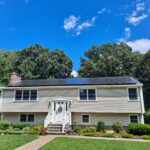

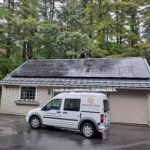
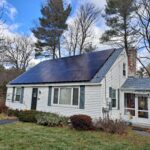
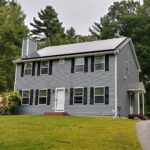
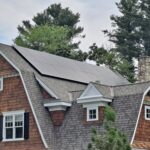
Pingback: Cold Weather, Snow, and Solar Power in New England — BRIGHTSTAR SOLAR
Pingback: Tweets that mention Cold Weather, Snow, and Solar Power in New England — BRIGHTSTAR SOLAR -- Topsy.com
Your point of view caught my eye and was very interesting. Thanks. I have a question for you.
Thanks for sharing. I read many of your blog posts, cool, your blog is very good.
70918248
References:
frank zane steroid (git.penwing.org)
What’s Taking place i’m new to this, I stumbled upon this I have found It
positively helpful and it has aided me out loads.
I’m hoping to contribute & aid different users like its aided me.
Great job.
My blog … nordvpn coupons inspiresensation
350fairfax nordvpn code
My spouse and I stumbled over here by a different web page
and thought I might check things out. I like
what I see so now i’m following you. Look forward to finding out about your web
page repeatedly.
70918248
References:
Legal Steroids side effects
Nerusu [41] and his colleagues reported that 6M, 4A, and 5A steroid molecules can type steady complexes with AGP and HSA, with greater binding affinity to HSA than AGP [41]. Consequently, HAS-androstenedione and its by-product complexes have been stabilized after 15 ns and found to maintain their secure buildings [41]. These may embrace remedy similar to psychotherapy, cognitive behavioral therapy or dialectical habits therapy, or methods corresponding to office lodging, mindfulness-based practices or coaching. People with ADHD may also search for alternate options to Adderall on account of the shortages at present affecting many stimulant medications, per the Meals and Drug Administration (FDA). Whatever your pick, one thing’s clear — Magnesium Malate is now not a fringe supplement. It’s a strong, science-backed answer for folks uninterested in being drained, sore from just existing, or fed up with sleep that seems like a nap during turbulence.
D-BAL is manufactured by the chief within the sports dietary supplements market, CrazyBulk. If you’re going to make use of D-Anaoxn, you’re going to need to apply it to an eight-week cycle. You can take anywhere from one to three tablets a day, making sure to go away a minimum of 5 hours between servings. If you’re taking three pills a day, your stack should final about a month.
Another important aspect of Hunter Test is its concentrate on total male health. It contains components corresponding to Ashwagandha, which has been shown to reduce back stress and improve mood, and Vitamin D,(9) which is essential for bone well being and immune function. Moreover, Hunter Test consists of Panax Ginseng to improve sexual drive and health, as well as rising your sperm rely.(10) These elements work together to provide well-rounded help of optimum male wellness.
Nevertheless, RAD a hundred and forty could assist mitigate this concern by preventing muscle breakdown, allowing individuals to take care of their hard-earned gains even whereas in a calorie deficit. Research suggests that RAD 140 can also have a positive impression on bone density, contributing to overall skeletal health. Sturdy bones are essential for sustaining an active life-style and reducing the danger of fractures, especially as we age. While additional research are needed to fully perceive the extent of RAD one hundred forty’s effects on bone strength, early findings are promising. In addition to its potential muscle-building benefits, RAD one hundred forty has also been studied for its potential to enhance bone well being.
They assist cut back irritation and assist cell health, which improves restoration after exercises. Shows that consuming plenty of healthy fats boosts the physical form and performance of power athletes. If you’re critical about muscle development however don’t need to risk your well being or reputation with banned substances, authorized steroid options are a wise and efficient choice in 2025.
The beneficial dose and stack of authorized steroids varies depending on the product. It Is necessary to learn the label fastidiously and observe the instructions. In general, authorized steroids must be taken as part of a consistent exercise routine and a nutritious diet to attain the maximum outcomes. When used persistently with common train and a nutritious diet, these legal How Does Steroids Work; https://www.heritagegloves.com/articles/why_clenbuterol_stacked_what_are_the_most_popular_options.html, provide efficient bennefits that lead to spectacular outcomes. We completely reviewed the security profile of every ingredient to minimize the chance of unwanted effects.
Tren Max is the authorized different to Trenbolone or Tren because it additionally known as, arguably the most powerful steroid for building lean muscle mass. It enhances nitrogen retention and pink blood cell manufacturing, leading to unimaginable vascularity and muscle hardness. I’ve seen athletes transform their physiques with Tren Max, achieving that dry, shredded look whereas still packing on size. With the right combination of diet, train, and rest, these legal steroids might help to maximize your muscle development and quickly allow you to reach your desired health targets. When mixed with a balanced food regimen and common train, legal steroids can present spectacular results for those looking to construct muscle and improve their overall physique. When it involves effectivity and outcomes, prohormones are often seen as stronger in selling muscle growth and enhancing athletic performance.
They inhibit the manufacturing of cholesterol in your liver, leading to considerably reduced blood levels of cholesterol. Berberine has additionally been shown to have positive effects in the treatment of non-alcoholic fatty liver disease and will shield towards inflammation and cancer. However, its effects are still being studied and it has a low absorption and bio distribution in comparability with pharmaceutical medication. It lowers triglyceride and blood stress ranges, in addition to whole and LDL (bad) cholesterol, which may reduce your risk of coronary heart illness (1, 5, 6). In a study in 116 individuals with sort 2 diabetes, the substance lowered fasting blood sugar ranges by 20% and HbA1c (a marker for long-term blood sugar levels) by 12% (4).
It isn’t well known however may be one of the powerful dietary supplements on Earth. We can tell you from experience, nothing feels higher than serving to folks along the path to their greatest selves. As the scientific neighborhood continues to explore RAD one hundred forty, it is essential to recognize the significance of evidence-based analysis. By relying on sturdy scientific methodologies, researchers can provide accurate and reliable information, empowering individuals to make knowledgeable selections regarding their health and well-being. Moreover, RAD 140 has a comparatively long half-life, that means it remains active within the body for an extended period. This attribute permits for handy once-daily dosing, making it simpler to include right into a daily routine compared to compounds that require a quantity of doses throughout the day. The main recognized metabolites of androstenedione in cattle and the freshwater ramshorn snail Marisa cornuarietis in both males and females.
All The Time seek the advice of healthcare professionals earlier than incorporating any supplement into your routine. When juxtaposing DMZ towards other prohormones, components like efficacy, safety, and value turn into pivotal. The use of DMZ Prohormones in competitive sports usually sparks moral debates. The potential performance-enhancing results of DMZ Prohormone place it in a controversial place, particularly in competitions the place athletes are expected to stick to fair play rules. Making Certain adherence to the principles and laws of sporting bodies is essential to maintain the integrity of competitive sports. A important advantage of DMZ is its lack of aromatization to estrogen, which eliminates issues related to bloating and gynecomastia (commonly often identified as “gyno”). This attribute makes DMZ a most popular choice for bodybuilders looking for to avoid estrogen-related unwanted side effects whereas maximizing muscle density and definition during slicing cycles.
DMZ Prohormone, scientifically often known as Dymethazine, has garnered consideration in the bodybuilding neighborhood for its potent anabolic properties. Originating from the compound Methasterone, DMZ Prohormone is usually lauded for its ability to advertise vital muscle gains and power with out the notorious side effects of its predecessors. Navigating through the vast world of bodybuilding dietary supplements could be a daunting task, especially in relation to prohormones like DMZ Prohormone, or Dymethazine. With the myriad of data obtainable, it’s essential to dissect the information from the myths. Today, we delve into the insights offered by consultants on the professionals and cons of DMZ Prohormone, a popular choice amongst bodybuilders. Monitoring for attainable side effects is totally absent when such substances are being utilized by physique builders.
A new model of the designer steroid management act was introduced to the US senate in 2014 actually naming 27 new steroids [116]. Prohormone is a term used to check with compounds that whereas within the physique convert into active hormones offering related advantages to anabolic steroids with out the authorized dangers of possessing unlawful anabolics. Several prohormones are actually steroidal compounds that just have not been banned or prohibited by the government and their legal guidelines referring to steroid use and possession. Dymethazine, also identified as DMZ or Methylated Dymethazine, is a designer steroid that was developed in the Nineties.
Bonding the 2 molecules together made it technically a model new substance, although once inside your abdomen the bond is rapidly damaged and the two superdrol molecules are let out. In Addition To the aforementioned Superdrol side effects that have been mentioned before, one other downside is that this drug can cause your HDL and LDL cholesterol levels to sink incredibly low. So it’s undoubtedly wise to take 1.2g of pink yeast rice (RYR) day by day to keep your lipid values inside a standard, healthy range. Moreover, RYR what is a major disadvantage of using over-the-counter (otc) medications? (https://www.jamaipanese.com/articles/best_supplements_to_get_ripped_1.html) sweet at preventing a few of the cardiovascular injury that can occur from a steroid cycle. However as a end result of RYR also reduces CoQ10 within the coronary heart, one ought to take mg of CoQ10 day by day as well. Oral steroids tend to cause painful muscle pumps and methasterone is definitely no exception. The pumps created from this drug are so painful that some bodybuilders have main issue even ending a workout.
Schmorl stained histological evidence showing acute cholestasis after ligandrol and post-cycle remedy misuse. Deposition of blue-stained bile salts in varied places in the liver parenchyma (Dr. Smitka). Androgens primarily exert their results through the androgen receptor, a member of the nuclear receptor superfamily [15, 16]. AR’s are located within the cytosol stabilized by heat shock proteins (Hsp) and different chaperones (e.g. p23) [17]. After dimerization the receptor advanced binds to androgen response components (AREs), specific promoter regions of the goal genes and acts as a ligand dependent DNA-binding transcription issue.
That said, any time you are on a cycle involving Super drol, you should stay hydrated (1-1.5 gallons of water daily) and take taurine, fish oil and potassium. Methasterone (a.k.a. methyldrostanolone) was first synthesized by the Syntex Corporation in 1956 in hopes that it could be used as an anti-tumor drug (1). But as Wikipedia explains, it was never bought commercially, and Syntex as an alternative bought its non-17α-alkylated counterpart, drostanolone, beneath the name Masteron – another drug utilized by many bodybuilders at present.
ARs are expressed in several cell sorts in human skeletal muscle, including satellite tv for pc cells, fibroblasts, CD34+ precursor cells, vascular endothelial, smooth muscle cells, and mast cells [38]. In the skeletal muscle testosterone itself appears to be the performing hormone as a result of no 5α-reductase activity is observed in these cells [12]. It induces hypertrophy of kind 1 and a pair of fibers and increases the variety of muscle progenitor cells (satellite cells) and promotes their myogenic differentiation [38]. These modifications in skeletal muscle result in improved muscle strength and leg energy [39, 40].
The scientific course remained favorable and the affected person was discharged after eleven d. Without further intervention, the serum parameters normalized inside three mo. Dymethazine, also called DMZ, is a highly effective compound which produces huge muscle and power gains and increased vascularity with zero water retention.
Presently approved makes use of of androgenic steroids embrace androgen deficiency, delayed puberty, breast cancer, postpartum breast engorgement, hereditary angioneurotic edema, endometriosis and fibrocystic breast illness. The androgenic steroids are also used off label and illegally as a method of accelerating muscle mass and athletic performance. The abuse of anabolic steroids is especially common among physique builders and younger male athletes, though their use has been banned from the Olympics and in major professional and school sports activities. Lately, anabolic steroids have been found in some nutritional supplements out there over-the-counter or by way of the internet that are marketed as rising a way of wellbeing and muscle mass or as an assist to physique building.
Anabolic refers to growth promotion, whereas androgenic refers again to the growth of male intercourse traits. As a result, the most secure way to construct muscle and endurance is through sufficient nutrition, exercise, and relaxation. While both kinds of steroids share some similarities, they’ve distinct results on the physique and carry completely different risks. In this article, we delve into whether or not steroids trigger coronary heart assaults, the consequences and complications of using steroids, and safer options. Research lasting so lengthy as three years have also found no negative results of creatine in kids. It’s been used as a medical intervention in kids for sure circumstances, similar to neuromuscular problems and muscle loss.
Testosterone is the primary endogenous hormone belonging to this class. It is broadly used therapeutically, in numerous esterified types, as substitute therapy in male hypogonadism. Testosterone, and a choose few different AAS such as nandrolone and oxandrolone, may additionally be prescribed for other medical circumstances (e.g., osteoporosis or aplastic anemia). In Addition To this legitimate medical use, AAS are widely used – or rather, abused – for their muscle-building and strength-increasing properties in dosages far exceeding these used therapeutically. For brevity, within the remainder of this evaluation we employ the term ‘AAS use’ to check with the nonmedical high-dose abuse of AAS. Anabolic-androgenic steroids (AAS) are a group of hormones that embody testosterone and lots of of its artificial derivatives [3]. The organic results of SAAs and their metabolites are primarily mediated by intracellular receptors present in the brain and reproductive system in addition to many non-reproductive tissues such as bone, skeletal muscle, liver, kidney, and adipocytes [4,5].
Most anabolic steroids http://therockpit.net/wp-content/pages/clenbuterol_anavar_stack.html based mostly on testosterone, the male intercourse hormone. Completely Different from anabolic steroids, corticosteroids are both naturally occurring hormones or artificial medication. They’re used to treat immune overreactions, inflammation, bronchial asthma, and COPD [12].
You can take anabolic steroids orally, inject them, or use them as lotions or gels. Here are six potential side effects of anabolic steroids after they’re taken at high doses and absent a clear medical indication. I try to keep away from oral steroids entirely as they have actual risks (e.g., I’ve seen too many patients who developed Cushing’s or Cushing’s like syndromes from oral steroids given for a lung condition) and higher options exist for those illnesses now. The major reason people misuse anabolic steroids is to extend lean muscle mass when using them in conjunction with weight coaching.
Oral steroids are recognized to cause acne-like breakouts known as acneiform eruptions on the trunk and limbs of some individuals. Whereas that is unusual with topical steroids, the drugs can sometimes trigger comedones—better often identified as blackheads or whiteheads—on the face with extended use. They may also cause a brief rise in blood strain and a rise in LDL (“bad”) cholesterol levels while HDL (“good”) levels of cholesterol lower.
And the temptation can be huge, especially if you see other guys on the fitness center taking them with big outcomes. An overdose of prednisone is not expected to supply life threatening symptoms. Since the systemic absorption of inhaled steroids is far lower than from oral steroids, systemic side effects are rarer (but can still occur with extended use at greater doses).
Nasal steroid sprays are used to deal with chronic sinusitis and allergy symptoms that have an result on your respiratory, like hay fever. They may also be used to deal with loud night time breathing and nasal polyps, noncancerous growths within the nasal passages. If you might have issues with side effects, they don’t go away, or they turn into worse, speak with your physician or pharmacist. They can discuss options for managing side effects or other out there remedy choices.
Nevertheless, side effects are extraordinarily frequent even on short doses and for otherwise wholesome individuals. The greater doses commonly used in competitive athletics and strength sports are linked to an elevated threat of unwanted facet effects and cannot be deemed protected (1). The anabolic-to-androgenic ratio varies between various varieties of AAS, which can affect opposed reactions as well.
70918248
References:
get steroids online (http://www.birdstoppers.com/blog/post/3668674?page_612217230=2%22%3E)
70918248
References:
anabolic steroids for women (https://mookdarshak.in/heritage-aviation-started-pithoragarh-almora-helicopter-service/)